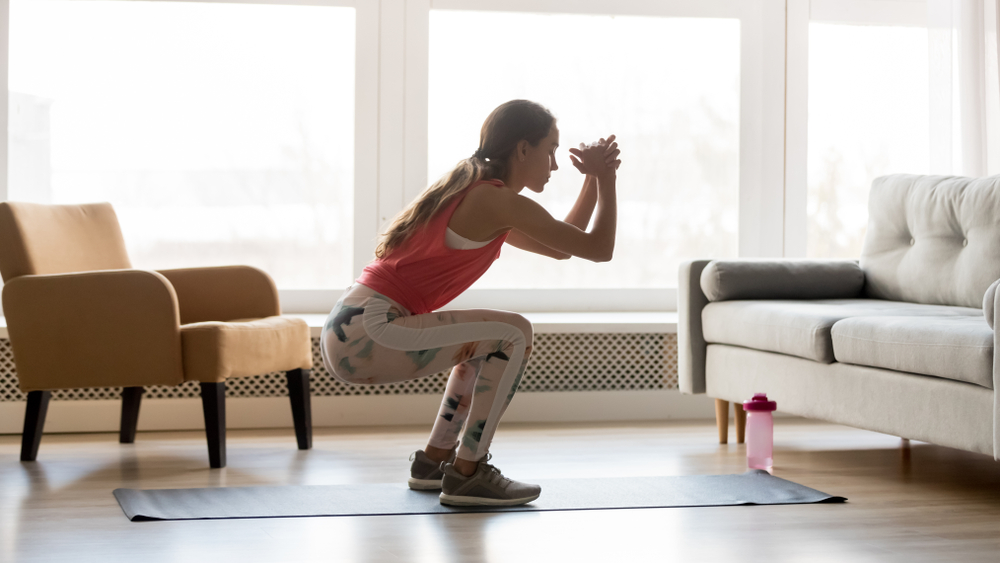If you experience pain when you bend your knees, it could be due to one of these three conditions.
Your knee is an incredibly complex and resilient joint. Yet because it bears the lion’s share of your weight with each step, it is especially vulnerable to wear and tear. If your knees are damaged, the pain will be particularly acute when you run, jump, or simply bend over to pick up an item off the floor.
If you’re experiencing knee pain when you squat, here’s what you can do about it.
What Causes Knee Pain When You Squat?
The knee joint consists of bone and cartilage that work together to give you the ability to walk and bend. When you move, the cartilage acts as a buffer against the bone. Due to age, overuse, or injury, the cartilage may fray, allowing the bones to rub together. This causes pain, a restricted range of motion, a grinding sensation in the joint, and sometimes swelling.
To diagnose the source of your knee pain, an orthopedic specialist will do a physical examination of your knee to assess its range of motion and your symptoms. An X-ray or MRI may also be ordered to rule out conditions such as a broken bone, tendon damage, or a misaligned kneecap.
In all likelihood, your painful knee is due to one of these three ailments:
- Patellar Tendonitis
Also known as “jumper’s knee,” patellar tendonitis refers to an inflammation of the patellar tendon that connects the kneecap (patella) to the shin. Symptoms include burning pain around the kneecap, stiffness, and redness. The condition usually affects people who play sports that involve jumping and flexing the knee. Basketball is a prime example of such a sport since the constant jumping motion can irritate the tendon over time.
Depending on the severity of the tendonitis, conservative methods including rest, icing, anti-inflammatories, stretching, and applying a supportive brace around the joint can diminish the pain within weeks. Only in instances when noninvasive options fail is surgery recommended.
- Osteoarthritis
Knee osteoarthritis occurs after many years of cartilage deterioration that causes painful friction between the bones. In rare cases, an injury such as a ligament tear or fracture weakens the cartilage and leads to arthritis.
Non-surgical treatments are prescribed initially to treat knee arthritis, which include physical therapy to strengthen the muscles and the ligaments of the knee, oral pain medication, and wearing a stabilizing brace. Corticosteroid injections may also dial down the pain level. Advanced cases of knee osteoarthritis may require surgery to repair the tendon or replace the knee joint.
- Iliotibial Band Syndrome
Running from the hip to the knee is a band of tissue made of collagen called the iliotibial (IT) band. The IT band supports the muscles around the knee, giving the joint the ability to extend, bend, and rotate. However, the IT band may become inflamed when it grinds against the lateral femoral epicondyle, a boney spike on the side of the knee.
IT band syndrome is commonly diagnosed in runners because they often aggravate the tissue after frequent runs. Pain along the outside of the knee, swelling, and a popping sound when the knee moves are red flags for IT band syndrome.
A program of physical therapy to stretch and strengthen the IT band, massage, and corticosteroid injections comprise the first-line treatment regimen for this condition. Rolling the side of your affected leg over a foam roller eases tension in the IT band, as well. If surgery is needed, a surgeon will clear the IT band of any scarring or inflamed tissue in an arthroscopic procedure.
Don’t Suffer Knee Pain Any Longer
If you’re experiencing knee pain, you can also try some at-home remedies. Refraining from the activity that causes discomfort is a good starting point, but you should follow the RICE method, as well. RICE stands for rest, ice, compression with elastic bandages, and elevation of your knee above your heart. Applying heat to the joint can loosen arthritis-related stiffness, but be warned that the heat could increase swelling. As you heal, you can switch to activities that are less stressful to the knees, namely cycling, swimming, and water aerobics.
At New York Bone & Joint Specialists, our doctors and physical therapists have helped numerous patients overcome knee pain and other orthopedic ailments. Backed by decades of experience in sports medicine, we’ll develop a customized treatment plan to quickly heal your pain and get you back to your activities as soon as possible. Contact us today for an appointment.




